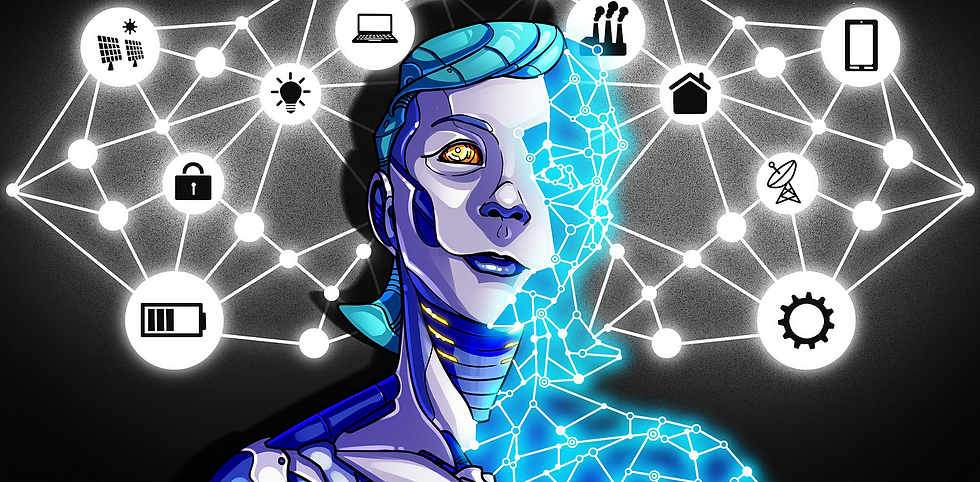Exploring the Role of AI in Predicting Crypto Market Trends
- Bitcoinsguide.org

- May 15
- 3 min read
How Artificial Intelligence Is Changing the Way We Analyze Cryptocurrency Markets
As the cryptocurrency market grows in size and complexity, traditional methods of analysis are being pushed to their limits.
Traders, analysts, and investors are increasingly turning to Artificial Intelligence (AI) to gain deeper insights and predictive power in a space known for its volatility.
AI is not only transforming how we interpret data but also how we act on it.
Let’s dive into how AI is being used to forecast crypto trends — and what this means for the future of digital asset investing.

1. The Challenges of Predicting Crypto Markets
Crypto markets are notoriously unpredictable. Unlike traditional financial systems, which are influenced by macroeconomic trends and regulated environments, the crypto space is:
Highly volatile
Influenced by sentiment and hype
Active 24/7
Flooded with noise and misinformation
This makes it difficult for even experienced analysts to predict short- and long-term trends.
AI helps address this by processing enormous amounts of real-time and historical data, identifying hidden patterns, and generating actionable insights faster than any human could.
2. How AI Is Used in Crypto Trend Prediction
AI in the crypto space primarily falls into the following categories:
A. Sentiment Analysis
AI models can scan thousands of news articles, social media posts, Reddit threads, and tweets to determine public sentiment about a coin or project.
A sudden rise in positive or negative sentiment can often predict price movements.
B. Machine Learning Price Forecasting
Machine learning models are trained on historical price data, market indicators, and macroeconomic variables.
Over time, these models learn to recognize patterns and correlations that can help forecast future movements.
C. On-Chain Data Analysis
AI can analyze blockchain data such as wallet activity, transaction volume, and token flows between exchanges to uncover trends and potential accumulation or distribution phases.
D. Trading Bots and Algorithmic Strategies
AI-powered bots execute trades based on defined strategies that evolve through reinforcement learning.
These bots adapt to changing conditions, often outperforming static rule-based systems.
3. Real-World Applications
Some of the practical implementations of AI in crypto include:
AI-powered trading platforms that offer personalized signals
Portfolio optimization tools using machine learning
Fraud detection systems analyzing suspicious transactions on-chain
Market anomaly detectors that alert users to unexpected activity
Startups and established firms alike are leveraging AI to provide retail and institutional investors with smarter tools for navigating crypto markets.
4. Limitations and Risks
While AI offers impressive capabilities, it’s important to understand its limitations:
Data quality is critical — biased or incomplete data can lead to inaccurate predictions
Overfitting can occur if models are trained too narrowly
AI is not infallible — markets can still behave irrationally
Investors should see AI as a powerful supplement to — not a replacement for — sound strategy and critical thinking.

5. What the Future Holds
As more data becomes available and AI models grow more sophisticated, we can expect:
Greater accuracy in short-term predictions
More advanced integration of AI in trading platforms
Democratization of AI-powered tools for everyday investors
Real-time adaptation to black swan events or regulatory changes
The synergy between AI and blockchain is just beginning.
As technology advances, investors who leverage both intelligently will be better positioned to navigate the ever-changing crypto landscape.
Final Thoughts
AI is rapidly reshaping how we understand and operate in the world of crypto.
From market analysis to automated trading, it enables a level of insight that was previously out of reach.
As we move deeper into 2025 and beyond, the combination of artificial intelligence and blockchain innovation is set to transform not only how we trade — but how we think about value, data, and decision-making.
Whether you're a beginner or an advanced investor, learning how AI tools work can help you stay one step ahead in this fast-moving market.



Comments